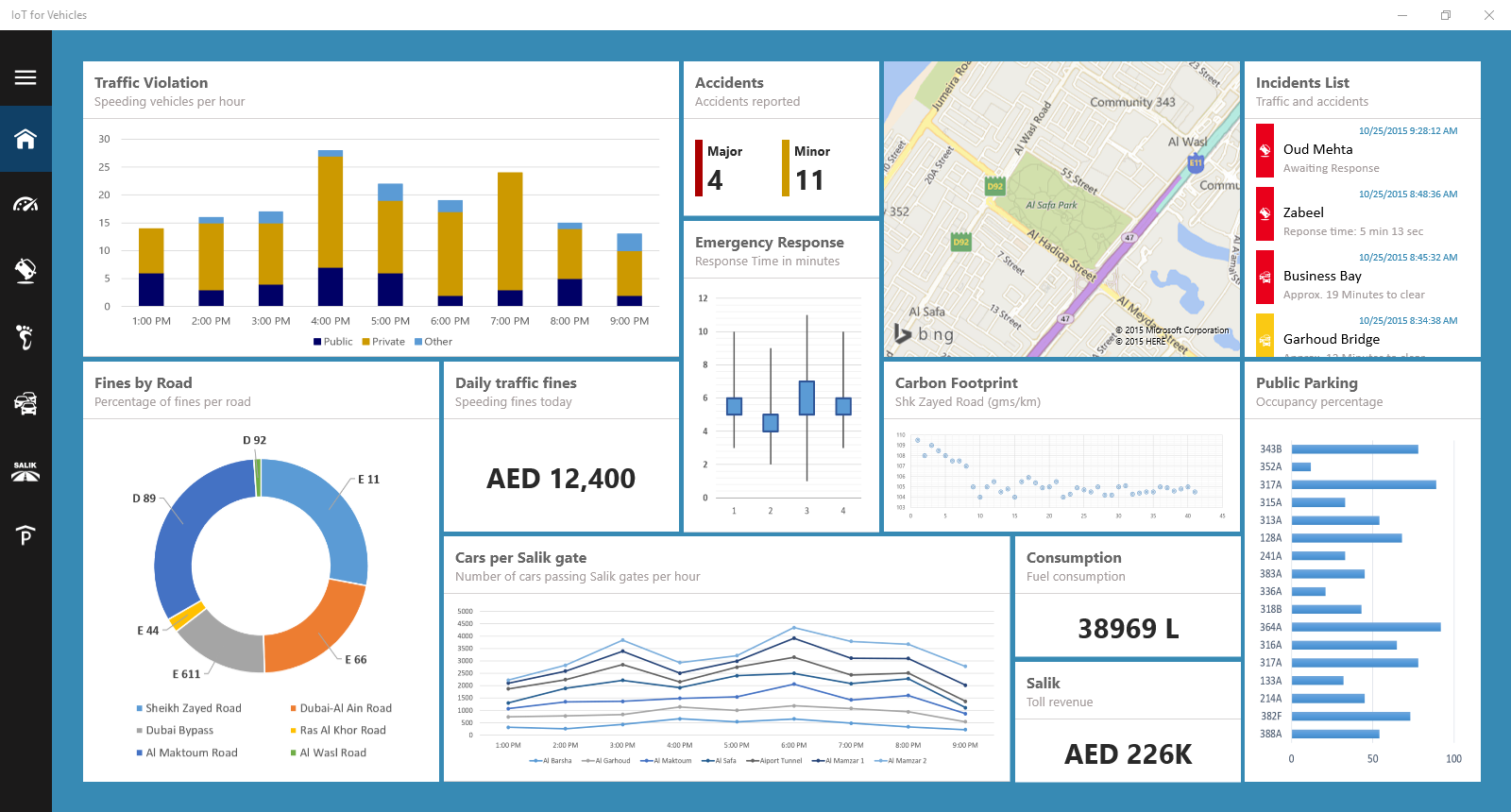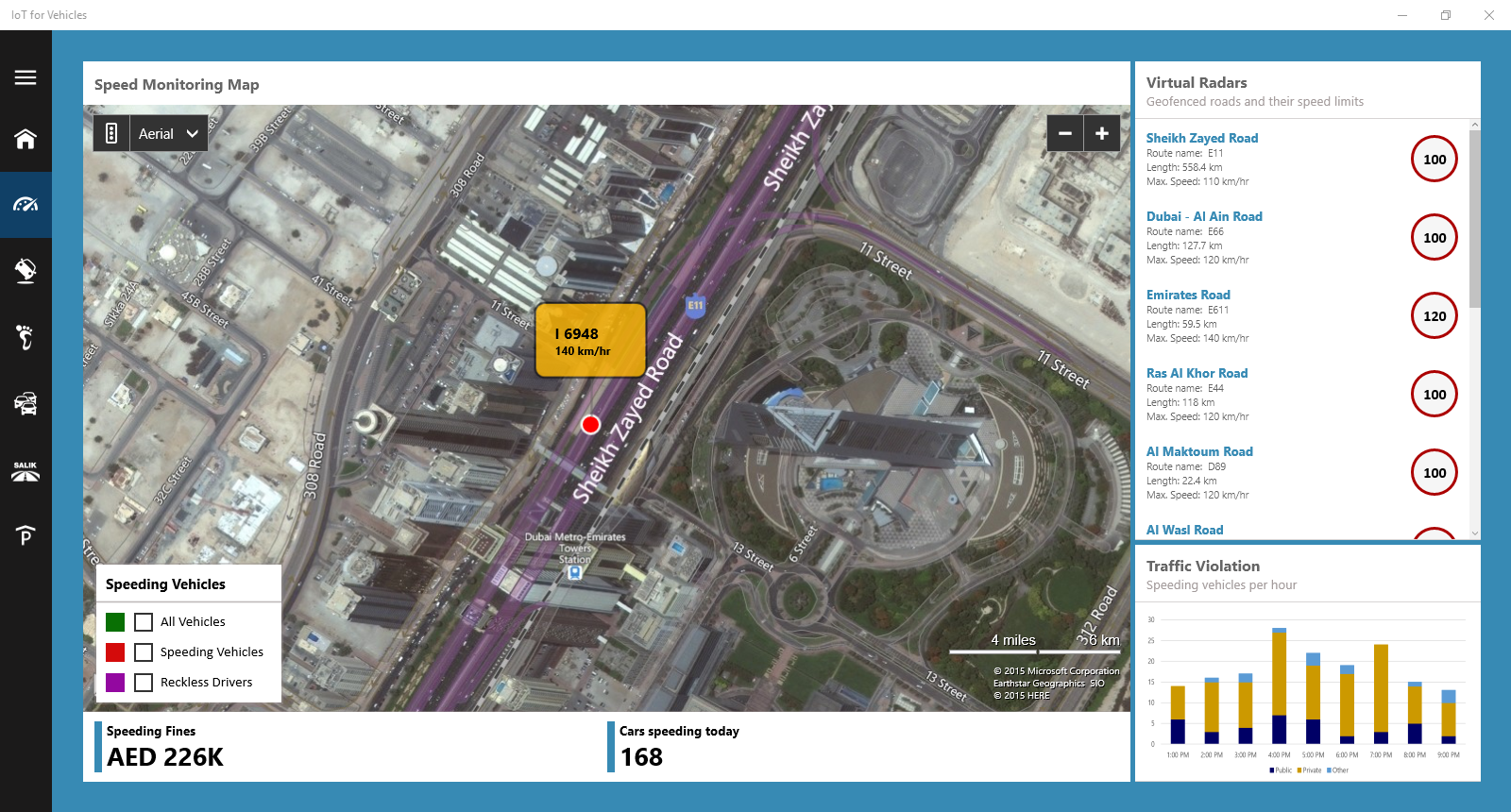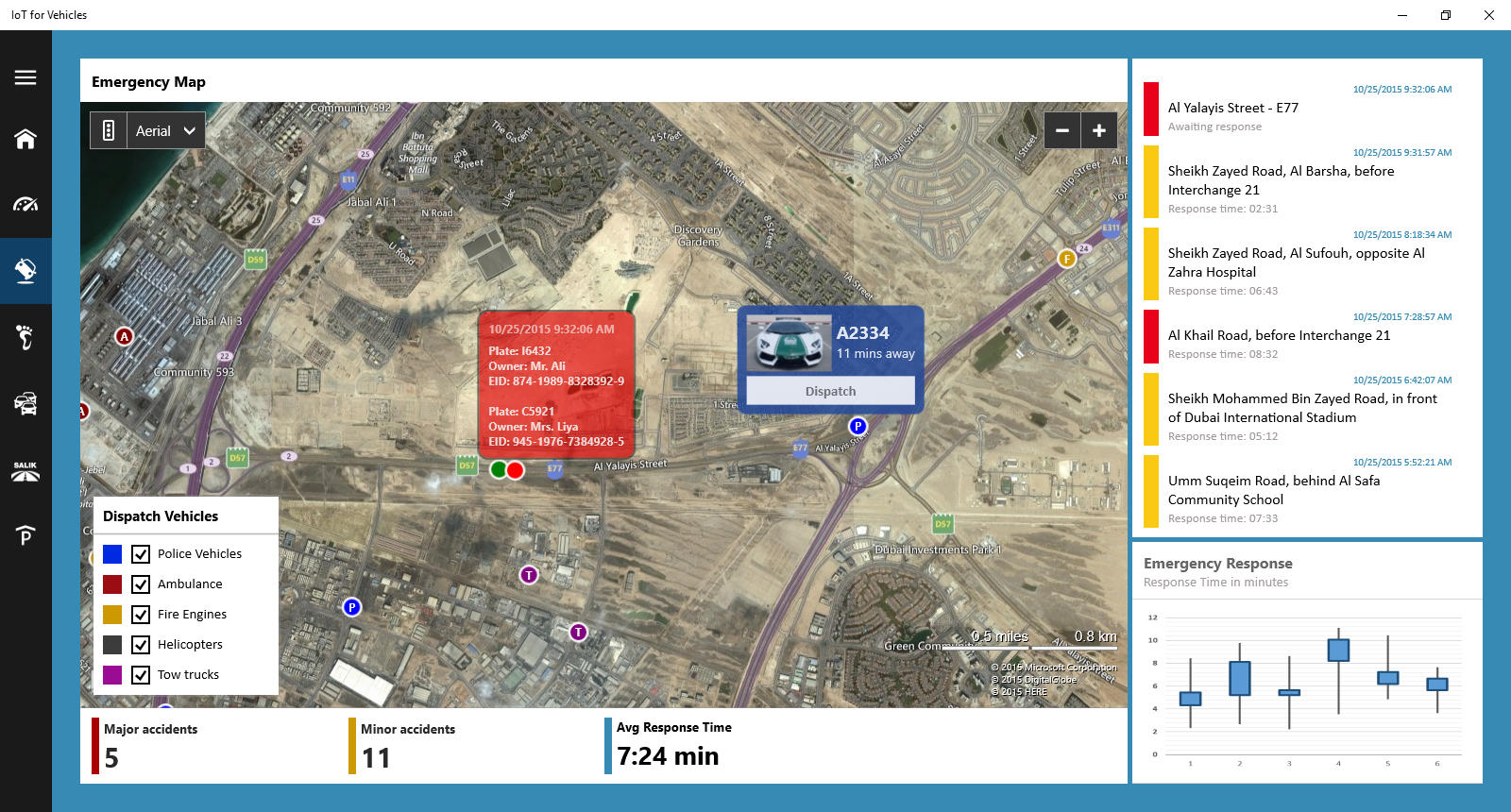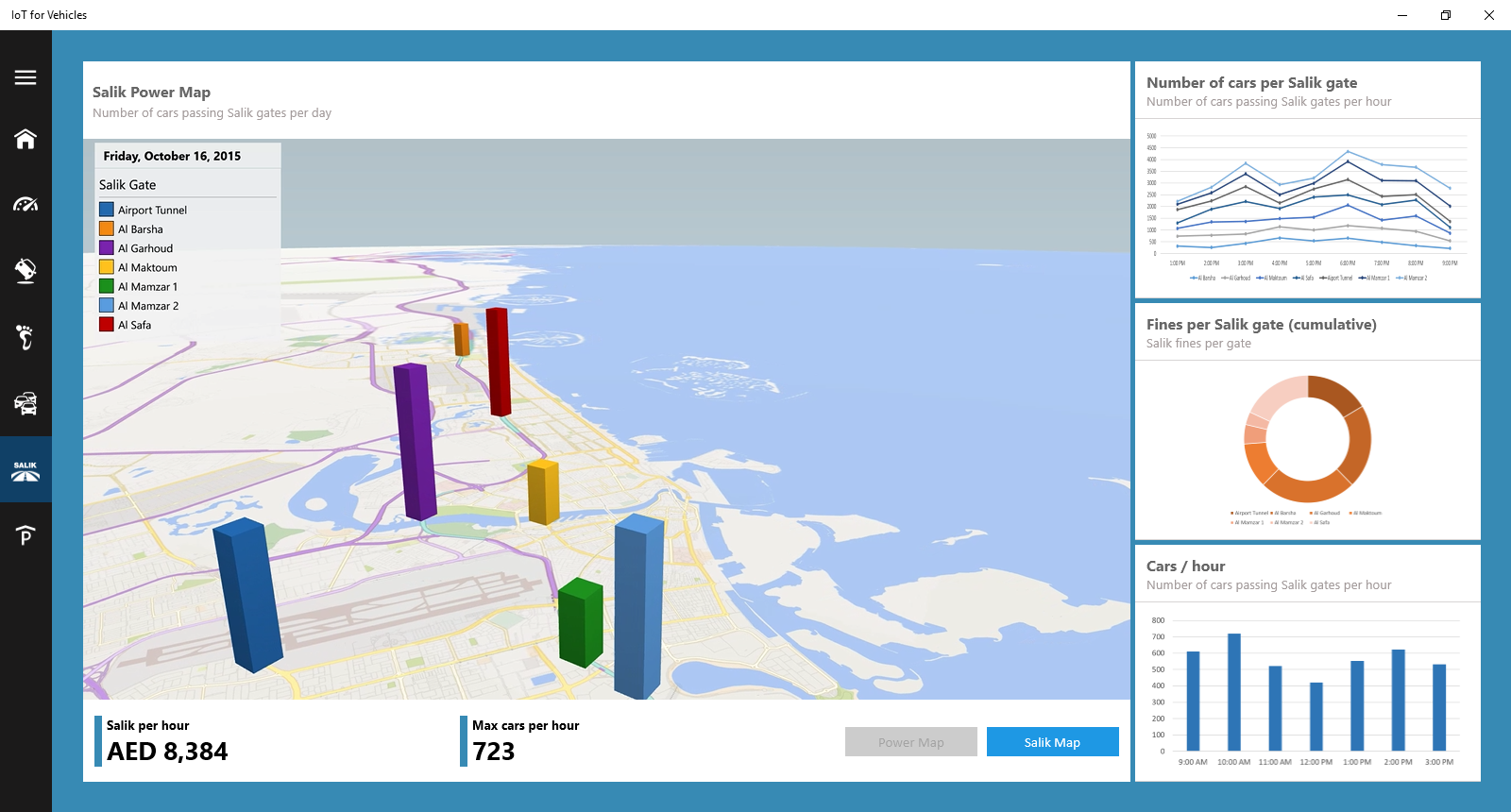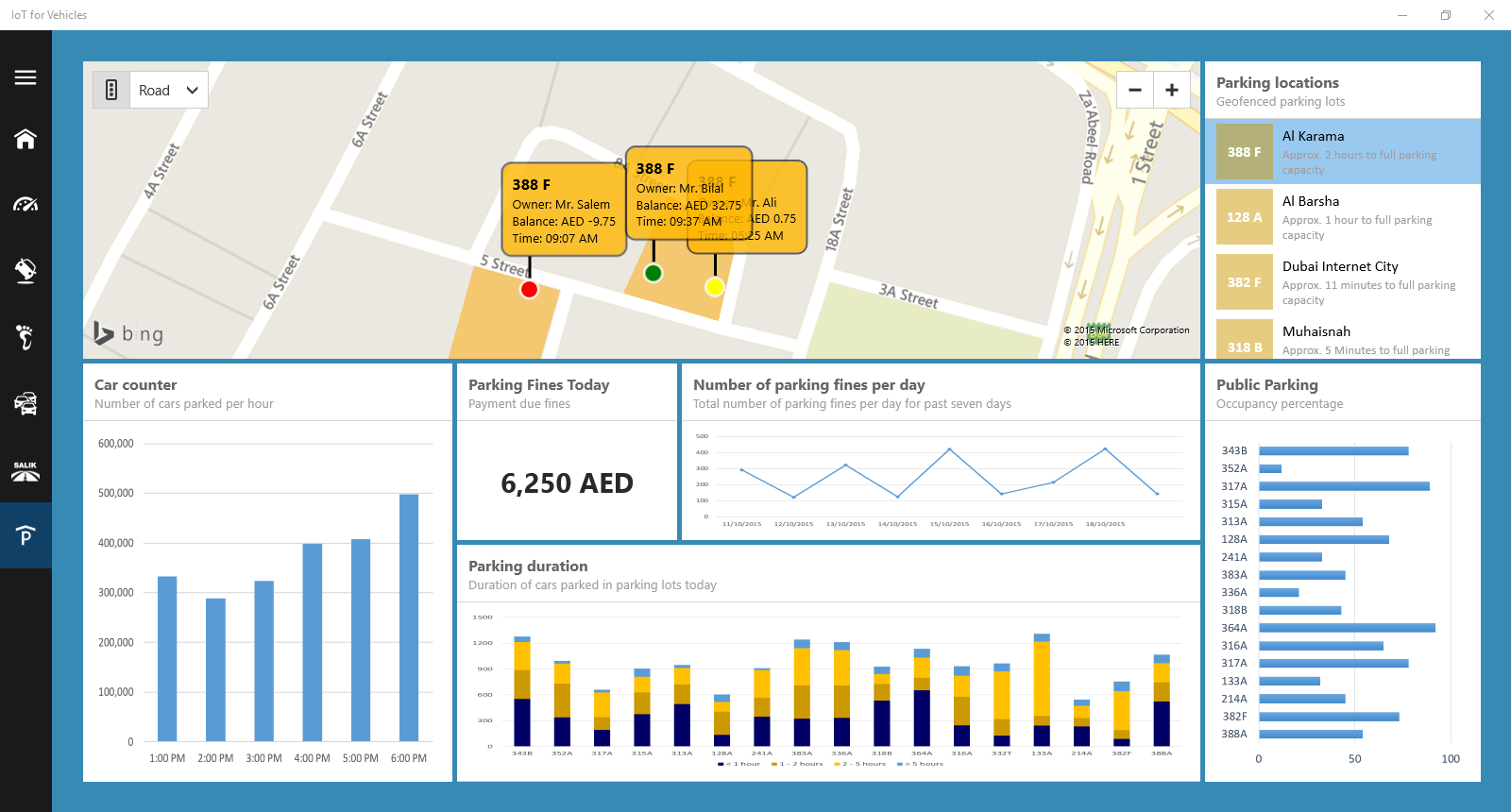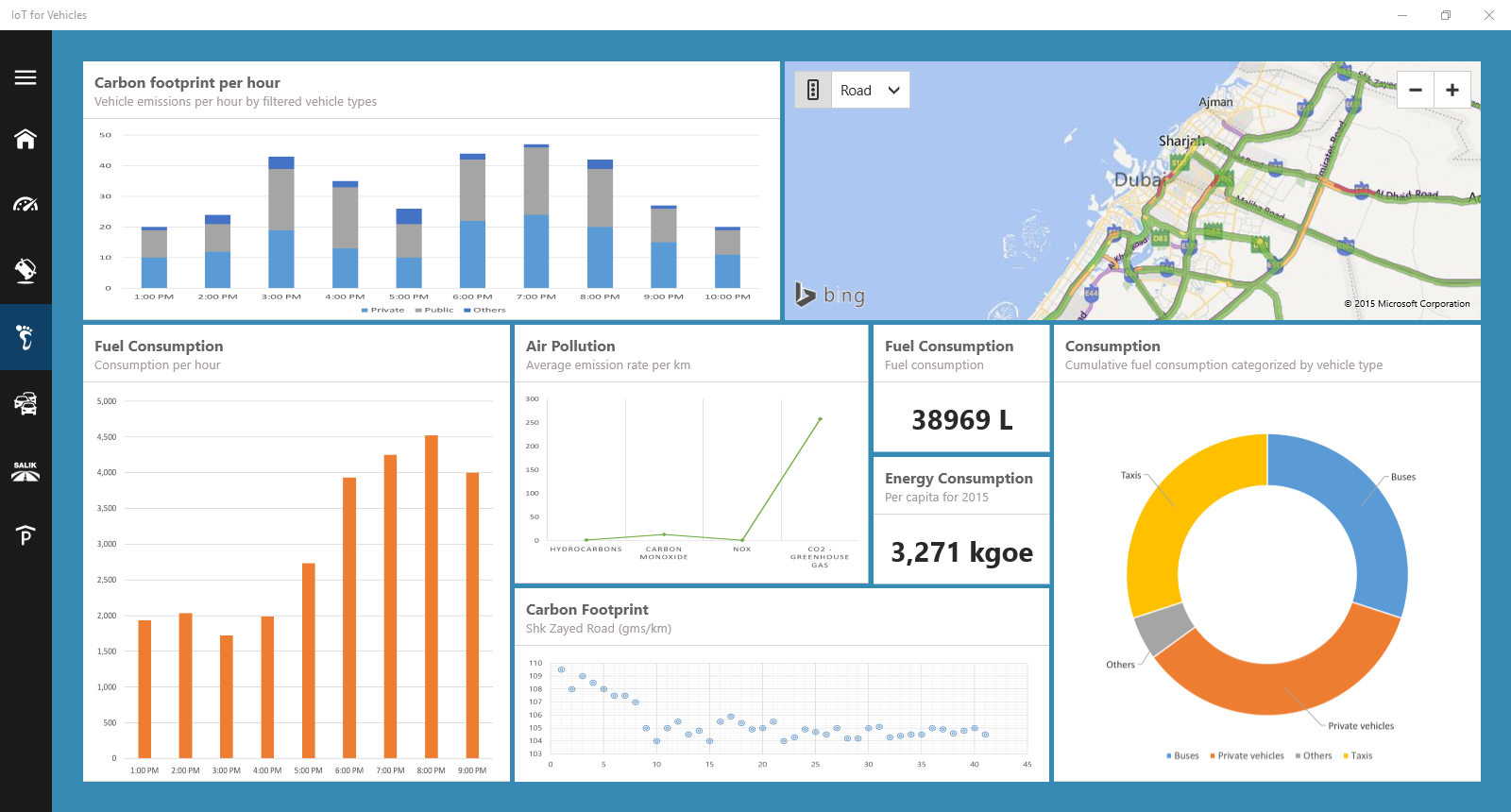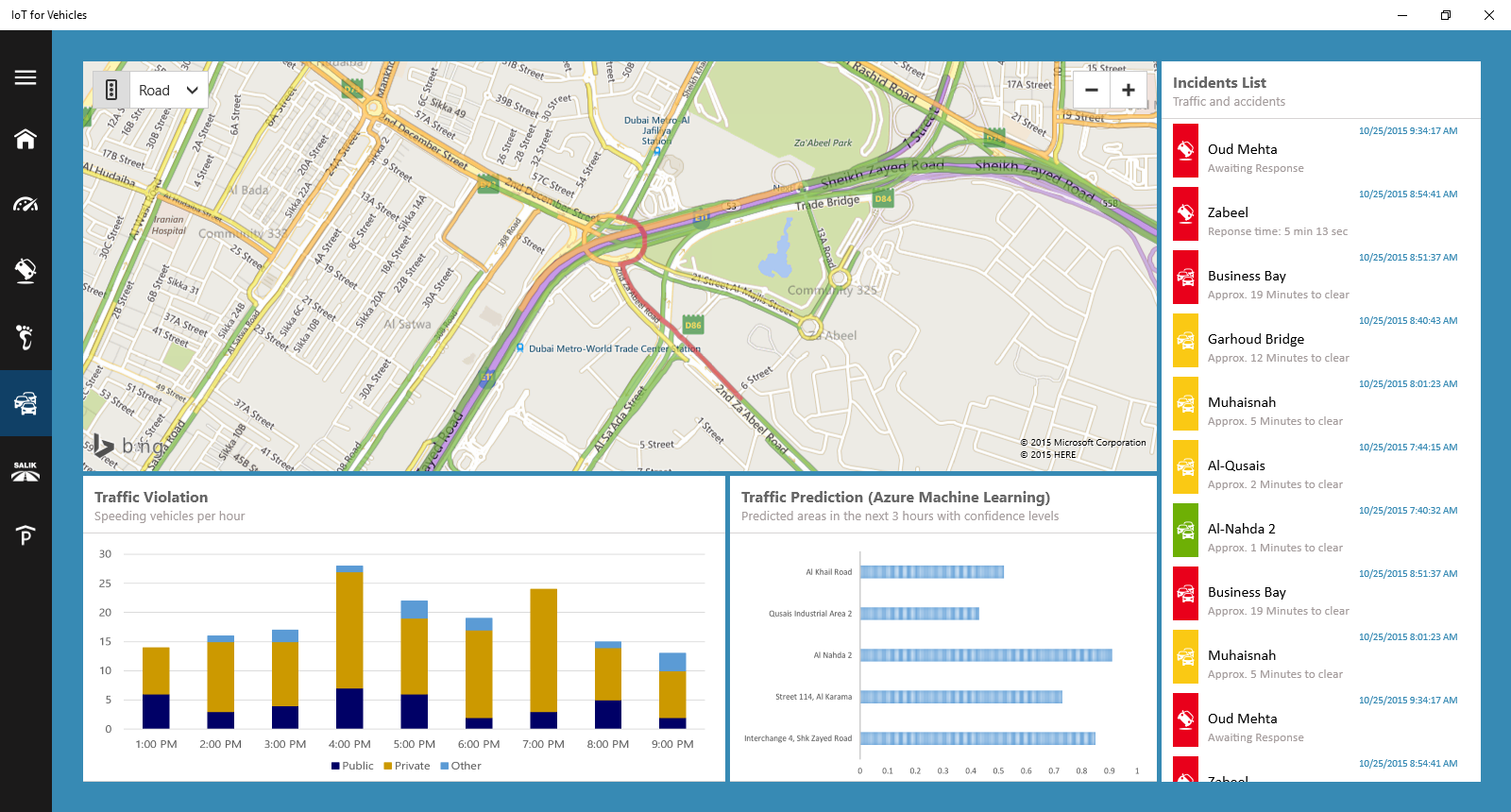IoT for Cars (Connected Cars) and Virtual Radars – GITEX 2015 Innovation Demo
Internet of Things - Connected Cars and Virtual Radars
GITEX (Gulf Innovation Technology Exhibition) is an annual technology exhibition and conference that takes place in Dubai at DWTC. This is a brief overview about the innovative demo around IoT for Cars showcased on Surface Hub devices at the Microsoft stand at GITEX this year.
The Concept
The concept is around IoT for Vehicles and analyzing the potential capability of using Azure big data collection and analysis solutions over the information we could retrieve from vehicles by embedding sensors in cars (in fact any vehicle in general). Using IoT devices like Raspberry-Pi 2 running Windows 10 core, we could connect to the OBD (On-Board Diagnostics) port of the car and tap into intricate vehicle information like vehicle speed, fuel consumption, airbag information, engine failure etc. These devices are connected to cloud and push data coming from OBD ports as well as other sensors on IoT devices like GPS, accelerometer, gyro sensor etc. to the cloud through Azure event hubs. Azure event hubs is capable of streaming millions of events per second from multiple cars so we could analyze this enormous amount of data coming from connected vehicles using Azure stream analytics that performs real time data analytics over the connected cars solution. These information could be fetched to display real time connected cars data on a dashboard like this:
In alignment with Microsoft’s City Next transportation solutions concept, the app showcases a few possible scenarios in a smarter city with connected cars - Virtual Radars, Emergency and Dispatch solutions, Toll & Fare Management, Parking Management etc.
Virtual Radars
Using IoT devices on cars, we could replace all physical speed radars in the city with virtual radars by geo-fencing the road and setting the speed limit of these roads on cloud. Speed radars are usually placed at indeterminate intervals and the range at which it could capture speeding is limited. Unsafe drivers tend to speed in between radars and slow down as soon as they spot a speed camera thus resulting in unsafe driving behaviors. But with this system the entire road would be geo-fenced and the responsible authority would get a notification when any car is speeding at any point of time. Also, this removes the infrastructure and maintenance costs for speed radar systems. We also have new radars being installed that could detect tail-gating (not keeping a safe distance with the vehicle in front). But connected cars may have proximity sensors that could identify how close the vehicle in front is. It also has accelerometers & gyro sensors that could identify swift lane changes and notify police of reckless drivers.
Emergency and Dispatch
As mentioned earlier using this system we could retrieve information on air bag deployments and engine failure. So when an accident happens a notification is sent to the respective authority along with vehicle information reporting an emergency situation. Dispatch vehicles like police vehicles, ambulances, fire engines etc. are also connected vehicles. So the rescue authorities would have visibility to the closest dispatch vehicles available and could remote dispatch these vehicles for a faster response.
Toll Management
This system could also replace physical toll gate infrastructure with virtual toll gates. So soon as a vehicle crosses a geo-fenced virtual toll zone the amount will be deducted from the vehicle’s payment account. On the dashboard, we could see a real time depiction (on Power Maps) of the number of cars crossing toll gates and corresponding revenue.
Parking Management
A smart parking solution is not just about enabling road users to find a parking space easily, instead the system focuses on providing an intelligent parking management system where parking fares are automatically deducted for public parking spots. By geo-fencing parking locations, soon as a car enters a parking location and parks for more than 5 minutes, the vehicle will be charged based on the parking zone and time – amount will be deducted from the vehicle’s payment account. This system would also enable improved urban planning by providing information on occupancy percentage of parking lots, so the government would know where to build a parking location with minimal infrastructure investment or add additional parking lots.
Carbon footprint
Fuel consumption data retrieved per vehicle in turn lets us calculate the carbon footprint and analyze this data to ensure energy efficiency around the city in order to contribute to a cleaner and sustainable future. We could also use fuel consumption data to predict (using Azure Machine learning and predictive analysis) on how much fuel would be consumed in the city for next month/next year etc.
Traffic Management
While cities around the world strive to find effective solutions for traffic gridlocks, connected cars itself could contribute to major elucidation of traffic congestions not just by providing a quantitative report on the intensity of traffic, but also by having traffic data (coming from connected cars) available to motorists to direct them down the most efficient routes in terms of traffic. Intelligent toll systems as discussed above could also be used to control traffic flow by adjusting toll fares based on traffic volume. Traffic flow could also be optimized by intelligent traffic lights that adjust operation times or duration to traffic conditions.
Single point payment system for all road services
With virtual radars, vehicle monitoring, virtual toll gates and intelligent parking systems, we could have a single point payment system for using all road services. So every car would have a payment account associated with it, that could be recharged to use road services and get reports on toll, parking and fines over a period of time.
Summary
This concept aims at facilitating cities transform operations and infrastructure with innovative systems - connected Internet of Things devices and an all-encompassing cloud platform like Azure. But IoT devices and Azure IoT suite could certainly be used for any industry (oil and gas, healthcare, education, retail etc.) as IoT devices could be any sort of sensors or devices that connect to cloud.
Check out Azure IoT Suite “A cloud-based offering with preconfigured solutions that address common Internet of Things scenarios, so you can capture and analyze untapped data to transform your business.”
Cheers,
Shamlia Shukkur (shams@microsoft.com)
Innovation Lead at Gulf DX
Microsoft Gulf
Disclaimer: The statistics and locations used in the application are only for demo purposes and do not depict any actual figures.
Read more: https://www.gulfnews247.com/2015/10/18/microsofts-iot-demo-at-gitex-gives-a-glimpse-into-the-future/
